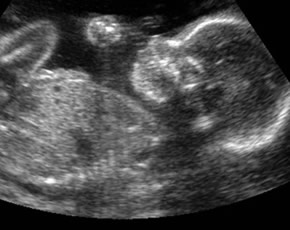
Leflunomide use during early pregnancy is associated with fetal malformations in animal studies and is classified as a pregnancy category X by the U.S. Food and Drug Administration. However, little is known about pregnancy outcomes in humans exposed to leflunomide in early pregnancy, particularly in those who receive “wash-out” with cholestyramine (a drug sequestrant). Here, Chambers et al (Arthritis Rheum 2010; 62(5):1494) present birth outcomes for the largest series of women exposed to leflunomide during early pregnancy.
Methods
Participants were women enrolled in the Organization of Teratology Information Specialists (OTIS) Collaborative Research Group. Clinical data and birth outcomes for women with rheumatoid arthritis (RA) or juvenile rheumatoid arthritis (JRA) who took at least one dose of leflunomide after their estimated date of conception and were compared to disease-matched women unexposed to any teratogen during pregnancy and to a group of healthy-control pregnant women. Cases were collected between 1999-2009.
Results
A total of 250 women were enrolled (64 in the leflunomide exposed group; 108 in the disease-matched group; and 78 in the healthy control group). There were imbalances among the groups in baseline characteristics. Compared to the healthy control group, leflunomide treated patients were of lower socioeconomic status, less likely to be on multivitamin or folate supplementation, and more likely to report tobacco use during pregnancy (25% vs. 10%; p<0.01). The average gestational timing of leflunomide after conception was 3.1 weeks. The longest exposure after conception was 8.6 weks. Cholestyramine wash-out was performed in 61 leflunomide treated women (95%). There was no significant difference between the groups in the proportion of liveborn or miscarried pregnancies. Only one pregnancy to leflunomide exposed mother was electively terminated. Among the live births, delivery by cesarean section was significantly more common among leflunomide exposed mothers (48%) compared to disease-matched non-exposed mothers (29%) or healthy control mothers (25%). Preeclampsia was not significantly higher in leflunomide exposed mothers.
Major structural defects occurred in 3 of 63 leflunomide exposed women (5%), all in the liveborn offspring, compared to 7% in the disease-matched control group and 4% in the healthy control group. These consisted of one occult spinal dysraphism, one uretero pelvic junction obstruction and multicystic kidney disease; and one microcephaly. There was a trend to higher number of minor abnormalities in the offspring of leflunomide exposed women (i.e. the proportion with ≥ 3 minor abnormalities was 47, 32, and 29% for the leflunomide-exposed, disease-matched control, and healthy-control groups, respectively; p=0.10).
Compared to the control groups, gestational age was significantly lower in leflunomide exposed women, with significantly lower birthweight compared to disease-matched controls. After adjusting for differences in maternal age, socioeconomic status, smoking, and preeclampsia, leflunomide was no longer significantly associated with lower gestational age or lower birth weight.
Among 19 leflunomide exposed women not-eligible for the cohort study, two malformations were encountered: aplasia cutis in the surviving member of a twin pair, and a birth resulting in multiple malformations in a mother treated with leflunomide for lupus.
Conclusions
Leflunomide exposure early in pregnancy was not associated with an increase in the number of major malformations, or adverse delivery outcomes compared to unexposed mothers with RA or JRA or healthy control mothers. Lower gestational age and birth weight were explained not by leflunomide exposure itself, but to sociodemographic factors linked to leflunomide use in the cohort.
Editorial Comment
It is actually quite surprising and reassuring that major malformations were not higher than what was observed in this study. This could indicate that leflunomide is not as teratogenic in humans as what was observed in animal studies, or that leflunomide washout with cholestyramine is very effective in limiting teratogenic effects. These data are clinically applicable for counseling women who may have been exposure during early pregnancy, particularly regarding issues of elective termination. Regardless, many practitioners will still choose not to use leflunomide in women of childbearing potential if there are other alternatives available.

